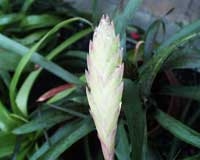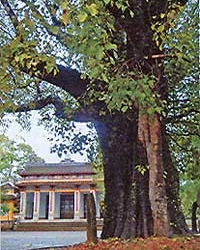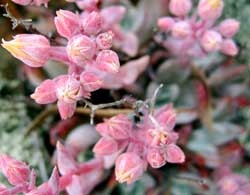Thanks to this plant, many gold mines have been discovered.
Geobotanical prospecting is a fascinating field.
According to Futurism, during the Middle Ages, Scandinavian miners were known to use alpine trumpet plants to search for copper. Throughout history, there have been numerous records documenting the correlations between plants and soils containing minerals. To this day, geobotanists still utilize this method to identify areas rich in copper in Sweden and Finland, as well as locations containing heavy metals such as uranium, lead, zinc, nickel, chromium, and barium.
So, what about gold? Is there any plant considered a bioindicator for soils containing gold?
Plants Commonly Found in Gold-Rich Areas
In 1900, Emil Lungwitz, an American scientist and inventor, published an article titled “The Decomposition of Gold on Plants” in the Mining Journal. By 1960, researchers from the U.S., Canada, New Zealand, and Siberia confirmed that certain plant species can absorb small amounts of gold in their branches and leaves.
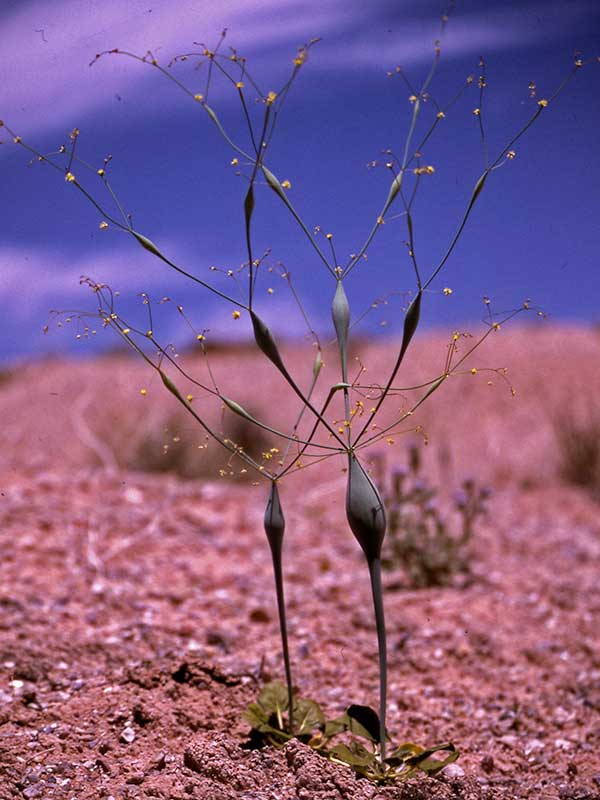
After multiple discoveries of gold mines in Nevada and Arizona, scientists noted that desert trumpet plants frequently grow in these areas. (Photo: USDA)
From this clue, they identified 85 different plant species that typically thrive in mineral-rich locations or specific elemental deposits. Among these, after several findings of gold mines in Nevada and Arizona, they encountered a particularly robust plant species. This is the desert trumpet (scientific name: Eriogonum inflatum).
The desert trumpet is a member of the buckwheat family, commonly found in rocky, mineral-rich soils. It inhabits warm climate areas, stretching from northern Arizona to Baja California in the United States. It typically grows at elevations ranging from 30 meters to nearly 1,800 meters. At lower altitudes, it appears in sandy to gravelly areas, mixed grasslands, and desert landscapes. At slightly higher elevations, it can be found in sagebrush and pine forests.
The desert trumpet is a perennial herb that grows upright and can reach nearly 1 meter in height. Its color is gray-green, with the upper stem swollen, resembling a bottle’s neck.
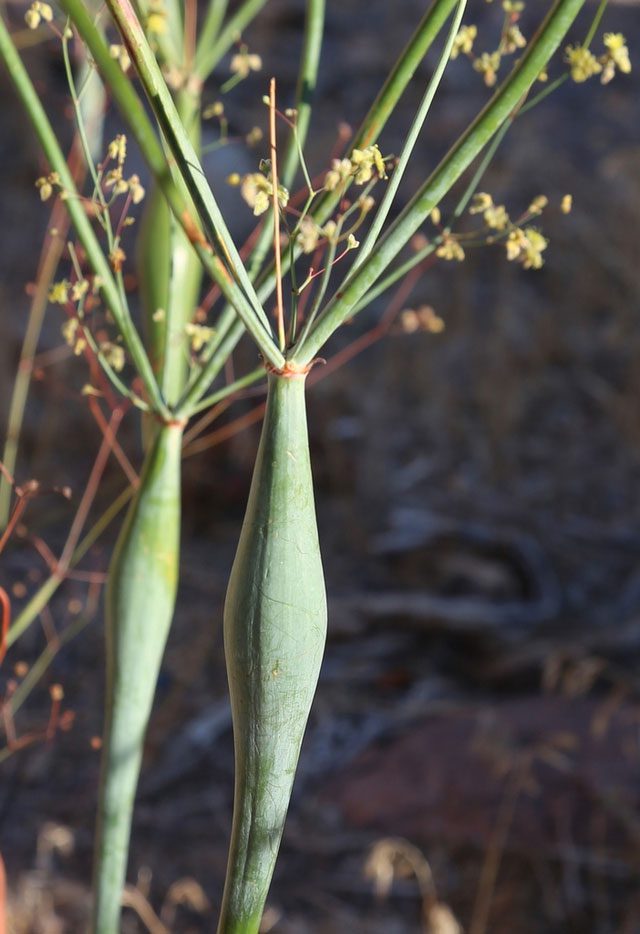
The swelling of the stem is believed to be influenced by the presence of nectar-producing insects. (Photo: USDA)
This swelling is thought to be caused by the presence of nectar-producing insects, most notably the genus Odynerus, which is a group of wasps. The female wasp creates a small hole in the stem of the desert trumpet, laying eggs inside, allowing the larvae to develop in the cavity, which also serves as a food source and protection for their offspring. The irritation caused by this process is believed to result in the stem’s swelling over time.
The inflorescence, where the flowers are located, is densely covered with curved, coarse yellow hairs, with greenish or slightly reddish veins. The stamens protrude from the flower tube. The basal leaves are ovate (egg-shaped), round, and attached to a long petiole measuring 2 to 6 cm. The desert trumpet flowers are quite small, measuring only 2 to 3 mm in length, and are loosely arranged in an open flower cluster (cymose).
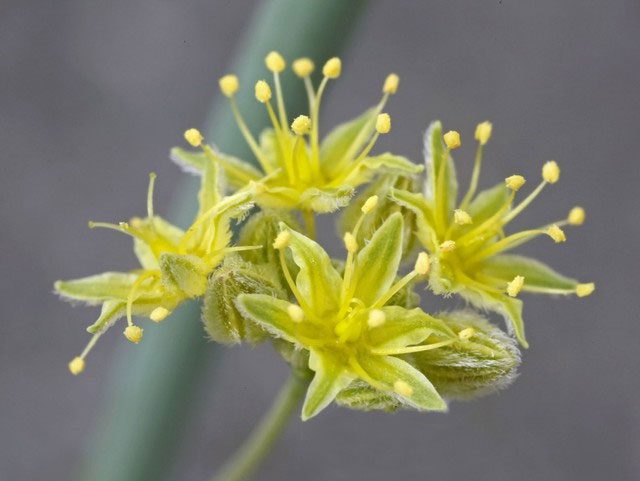
The flowers of the desert trumpet are yellow interspersed with green. (Photo: USDA)
The desert trumpet also has several documented medicinal uses, including the ability to grind the stem, roots, and leaves to treat colds. Additionally, it can be used to cleanse infected cuts or to utilize the roots for treating diarrhea.
In some records, the entire desert trumpet plant can be used to treat rheumatism, perform steam baths, alleviate stomach disorders, relieve muscle stiffness and pain, and it has even been used to combat syphilis.

The desert trumpet is also used for medicinal purposes. (Photo: USDA)
According to James L. Reveal, as described in the Flora of North America, there are also reports that the hollow stem is used as a drinking straw or conduit.
Experienced desert explorers always keep an eye out for these desert trumpet plants, knowing that they can lead them to nearby gold mines.








































